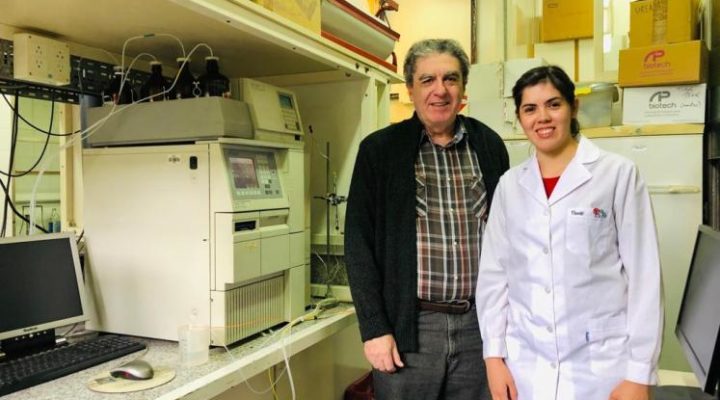BIOLOGICAL AND HEALTH SCIENCES
CONICET researchers find new aspects of insulin secretion
A team of the IMBICE and the University of Quilmes and German colleagues identified a cell functioning different to the one was known so far.
It is possible to state that there are two findings in one: the first one, the result of the specific search conducted by the scientists, and the second, totally unexpected. Researchers of the Group of Structural Biology and National University of Quilmes (GBEyB, UNQ) linked to the Multidisciplinary Institute of Cell Biology (IMBICE, CONICET-UNLP-CICPBA) in collaboration with colleagues of the Faculty of Medicine of the Technical University of Dresde, Germany, have recently published their advances after more than ten years of cell and molecular studies on diabetes. The article was published some weeks ago in the Journal of Biological Chemistry.
The study focused on the characterization –that is identification and description in retail of the structure and functions- of a protein called ICA512, which has a leading role in insulin secretion, a hormone produced by the pancreas that intervenes in the utilization of nutrients of food; thus promoting the entrance of sugar from the bloodstream to the cells to used as a source of energy.
“We showed how one segment of this protein called RESP18HD interacts with insulin and together become a precipitate, that is to say, a solid body that in this case is soft shapeless. This process would be involved the formation of insulin granules that are stored in the pancreas to be released into the bloodstream before a stimulus, which is in general the increasing concentration of glucose,” explains Maria Ermácora, CONICET researcher and director of the IMBICE. “The finding would serve to better explain how this recruitment ocurs.”
But in turn, and by chance, the study showed scientists that this passage from insulin to a solid state is part of a more general, very novel phenomenon known as protein condensate formation, which consists of a new way of organization by the proteins inside the cells. “This mechanism was discovered some years ago, in which the molecules are arranged in compartments without limiting membranes. They do it in the appearance of drops, a fact that refers to a higher degree of compartmentalization. The most relevant part is that this makes collective behavior prevail over individual properties and provides new interpretations of cell process,” the expert affirms.
This mechanism has begun to gain recognition as a new paradigm of biology and is in full swing considering that dozens of daily articles on cellular processes involving phase condensation without membrane are currently published worldwide. “This phenomenon is linked to the multiplication of viral particles and the pathological formation of abnormal fiber in cells of many neurodegenerative diseases whose main exponent is Alzheimer’s,” Ermácora adds.
The authors of the study agree that it is hard to know in this instance what this finding could be derived from, but they claim that it has caused surprise and the fact of knowing better how the process that gives rise to the insulin granules formulate new hypothesis in the analysis of diabetic disorders.
By Mercedes Benialgo
About the study:
Pamela L. Toledo. UNQ.
Juha M. Torkko. UT, Dresde, Germany.
Andreas Müller. UT, Dresde, Germany.
Carolin Wegbrod. UT, Dresde, Germany.
Anke Sönmez. UT, Dresde, Germany.
Michele Solimena. UT, Dresde, Germany.
Mario R. Ermácora. Principal researcher. GBEyB, UNQ, IMBICE.
